Transforming your processes can transform your business.
Not only can business process transformation lead to more effective and efficient workflows, but it can also result in happier customers, more satisfied staff, and better relationships with suppliers.
Read on to learn how to transform your business processes to make your organization more productive and efficient.
Click the links below to head straight to the section which interests you most:
- What’s Business Process Transformation?
- Business Process Transformation Steps
- 5 Examples of Business Process Transformation in Action
What’s Business Process Transformation?
Business process transformation is a part of business process management, where you change elements of your workflows to meet new business goals.
Usually, process transformation involves a switch from manual processes to digital technology and automation.
But modernizing processes is only one reason to implement a transformation initiative.

Mainly, organizations transform processes to streamline workflows and address operational inefficiencies. 65% of organizations see process transformation as a way to improve productivity and achieve greater efficiency.
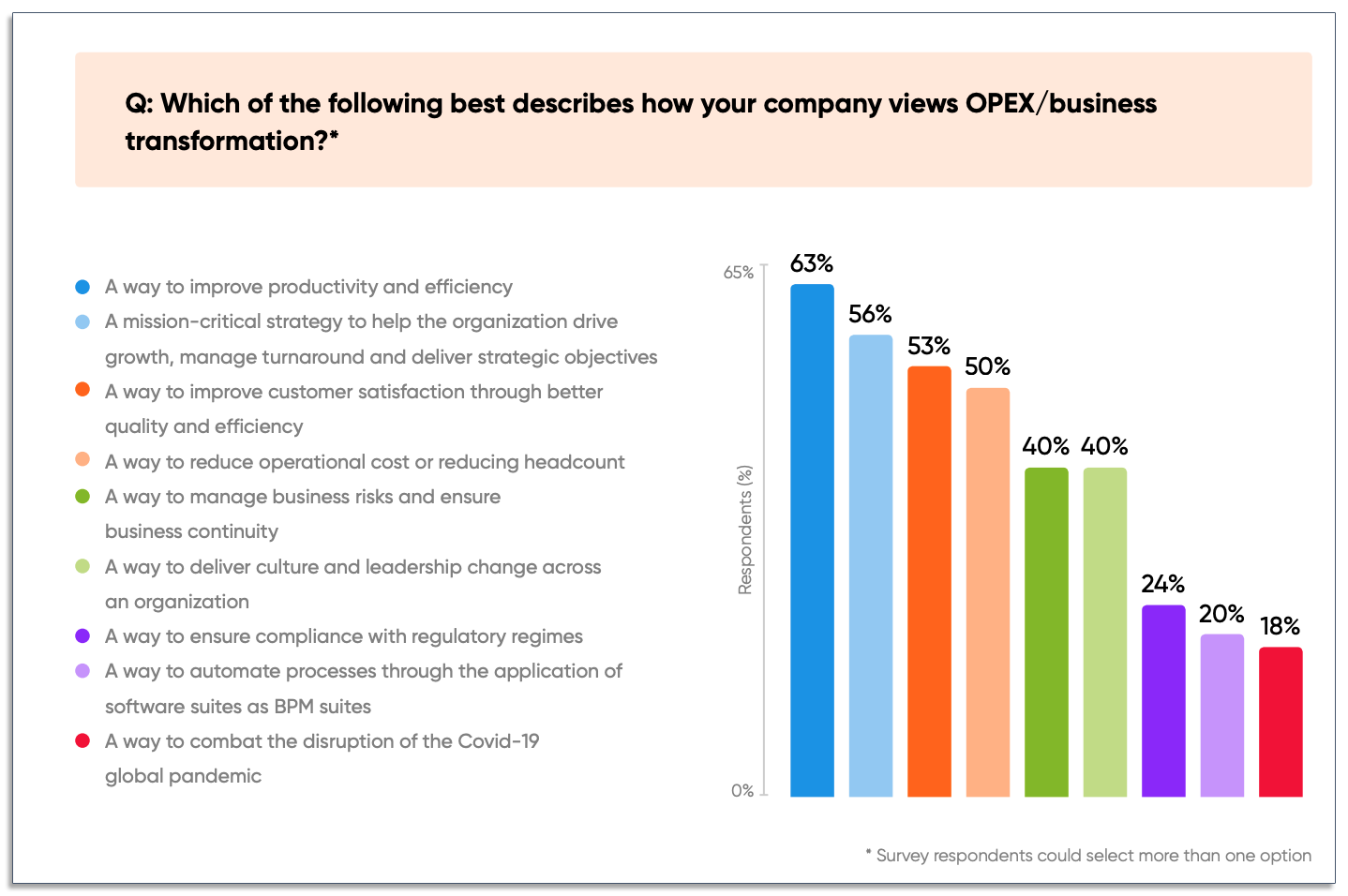
Using business process improvement tactics, companies aim to transform workflows, so they’re faster, cheaper, and more accurate.
Through process transformation, organizations seek to reduce the manual labor burden on employees. This allows employees to concentrate on more skilled tasks rather than getting bogged down with paperwork and administration.
In fact, half of all organizations believe that process transformation is a good way to lower costs and reduce labor demands. At the same time, 69% of employees agree that automation technology will give them the leeway to focus better on their primary job duties than on paperwork.
Organizations also transform processes to improve their outcomes. 53% of organizations say that transforming is an effective method for improving customer satisfaction by boosting quality.
Business Process Transformation Steps
Process transformation often feels like you’re turning an existing process into a whole new one.
Follow these eight steps to keep the transformation process on track.
1. Define Transformation Goals
Before setting out your business transformation initiative, you need to understand why you’re altering a workflow. What are the issues with the existing process, and what do you hope to achieve through a transformation?
Explore the current process to pinpoint where the bottlenecks occur and then perform a root cause analysis to understand where the real issues occur.
Once you know what the real problems are, define goals based on improving these issues.
2. Pick Metrics and Create Benchmarks
If you want to know whether you’re reaching your transformation goals, you must measure your performance against your original processes.
The metrics you choose to track should align with the goals you’re hoping to achieve.
These metrics may refer to efficiencies, such as the cost per process or the time it takes to complete a workflow.
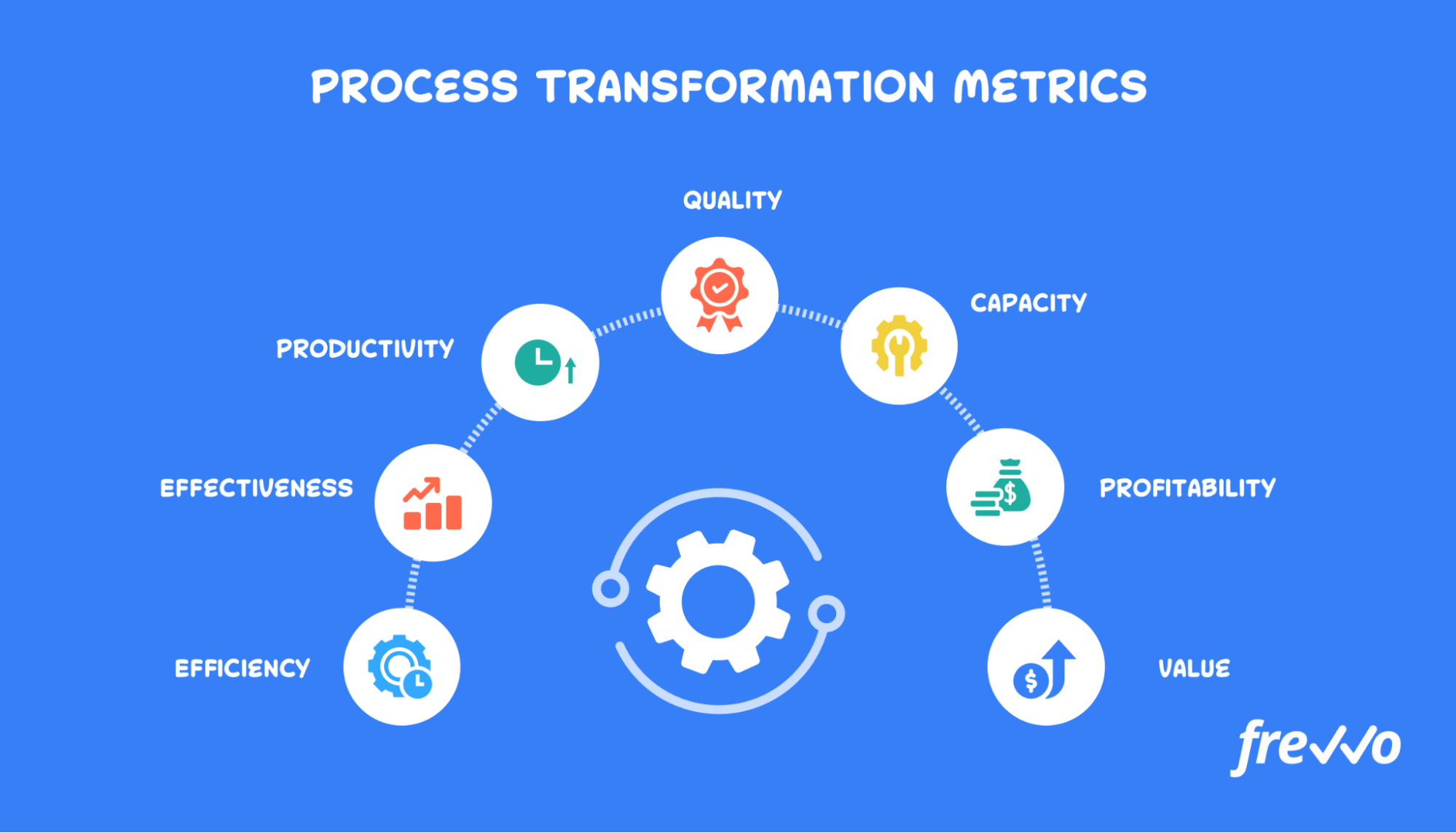
Alternatively, you may pick metrics that refer to productivity, such as how many outputs are made over a given time.
You can look to measure key performance indicators (KPIs) associated with:
- Effectiveness
- Capacity
- Quality
- Profitability
- Value
Remember to measure the performance of your original process so you can benchmark your transformation effect against this.
3. Brainstorm Changes With All Stakeholders
Before deciding on the changes you’re going to make, talk to the stakeholders involved in the process.
As a business leader, it can be tempting to consider operational shortcomings theoretically rather than getting to the bottom of bottlenecks in practice.
Successful business process transformation occurs when everyone who’s involved gets a say. You’ll find that talking to the staff who work the process daily will give you a “boots on the ground” perspective on why certain aspects fail and what should be in their place.
It’s also wise to talk to external stakeholders, such as suppliers and vendors. Customer feedback can help you shape your process improvement, too.
4. Model the New Workflow
Map out your new process to get a clear vision of how all the steps follow each other. Outline what will happen at each stage, who will be responsible, what resources will be used, and what should happen next.
By doing this, you’ll immediately notice any unpredicted blockages that may arise in your workflow.
Process modeling technology can help.
Using a standard notation format known as Business Process Model and Notation (BPMN), modeling software can help you create a standardized process model that’s easy for everyone in your organization to understand.

Not only does this make the new process clear to everyone, but it also makes it easy to train a new staff member.
5. Digitize and Automate
One of the major purposes of business process transformation is to cut out inefficiencies within your business operation.
Digitization and automation are two of the most effective ways to update your processes and streamline your workflows.
By digitizing paper forms, you get rid of physical paperwork, which helps speed up processing and eradicate errors and delays. Paper forms are no longer lost at the bottom of busy in-trays, and staff don’t have to struggle to read poor handwriting.
Plus, it’s easier and quicker to send documentation electronically, and you can collate and store documentation better for more accurate audit trails.
But to truly iron out the wrinkles in your workflows, you need to automate your processes.
Process automation streamlines routine tasks by cutting out the manual, menial work. That’s why 78% of business leaders agree that task automation increases productivity across the board.
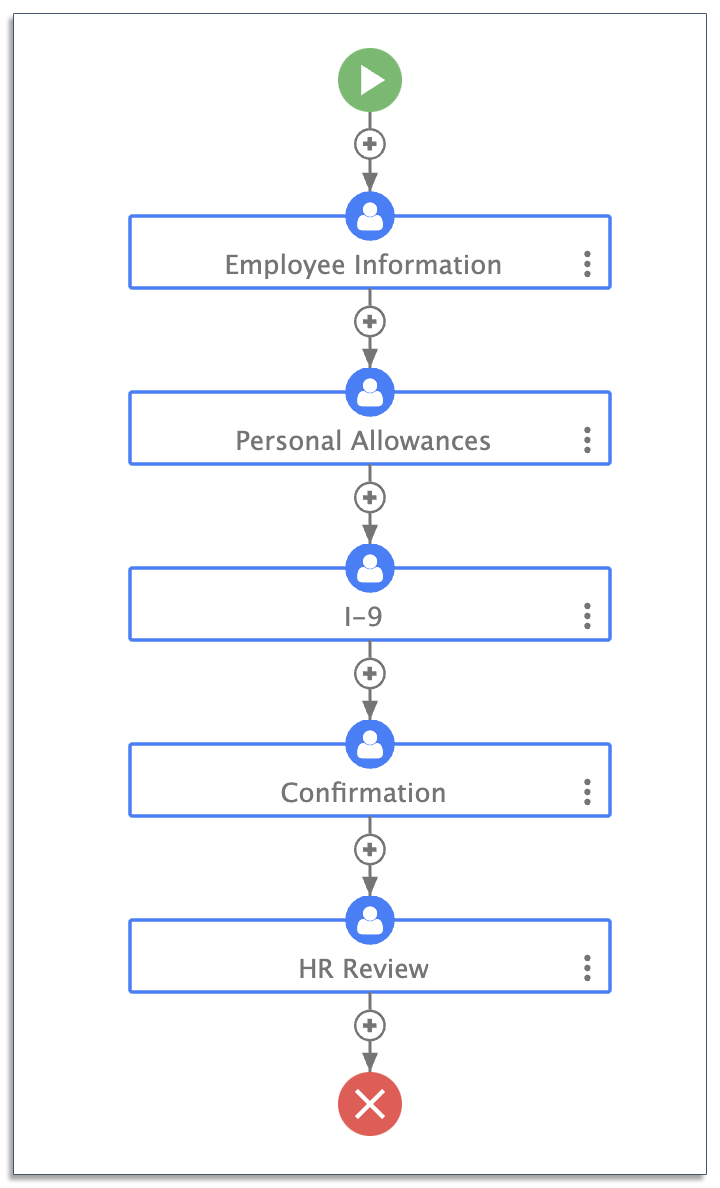
Using an automation technology like frevvo, you can automate:
- Data processing
- Notifications
- Routing
- Recordkeeping
- Internal and external communication, and more.
Not only that, but since many processes rely on forms, automation tools like frevvo usually include form design technology that helps you digitize and take advantage of the capabilities of online forms.
6. Test Changes
Once you’ve made a change, it can be tempting to immediately roll the transformation out across your organization.
It’s wise to test changes on a small scale first.
By testing your business process improvement first, you’ll spot unplanned, knock-on effects before they have an impact on the wider business.
This test period will also help you to see if there’s room to automate the pre-and post-processes that occur before and after your workflow.
7. Scale-Up Implementation
Once you’re confident that your changes will lead to successful business transformation, scale up your new process.
Make sure you write a standard operating procedure (SOP) so that every stakeholder knows how to carry out the amended process. An SOP will also make it easier to train new staff in the future.
8. Track Changes
Use your metrics to track your KPIs, so you know how well your changes are performing.
Monitor changes regularly to see where any unexpected bottlenecks are occurring and deal with them before they become problematic.
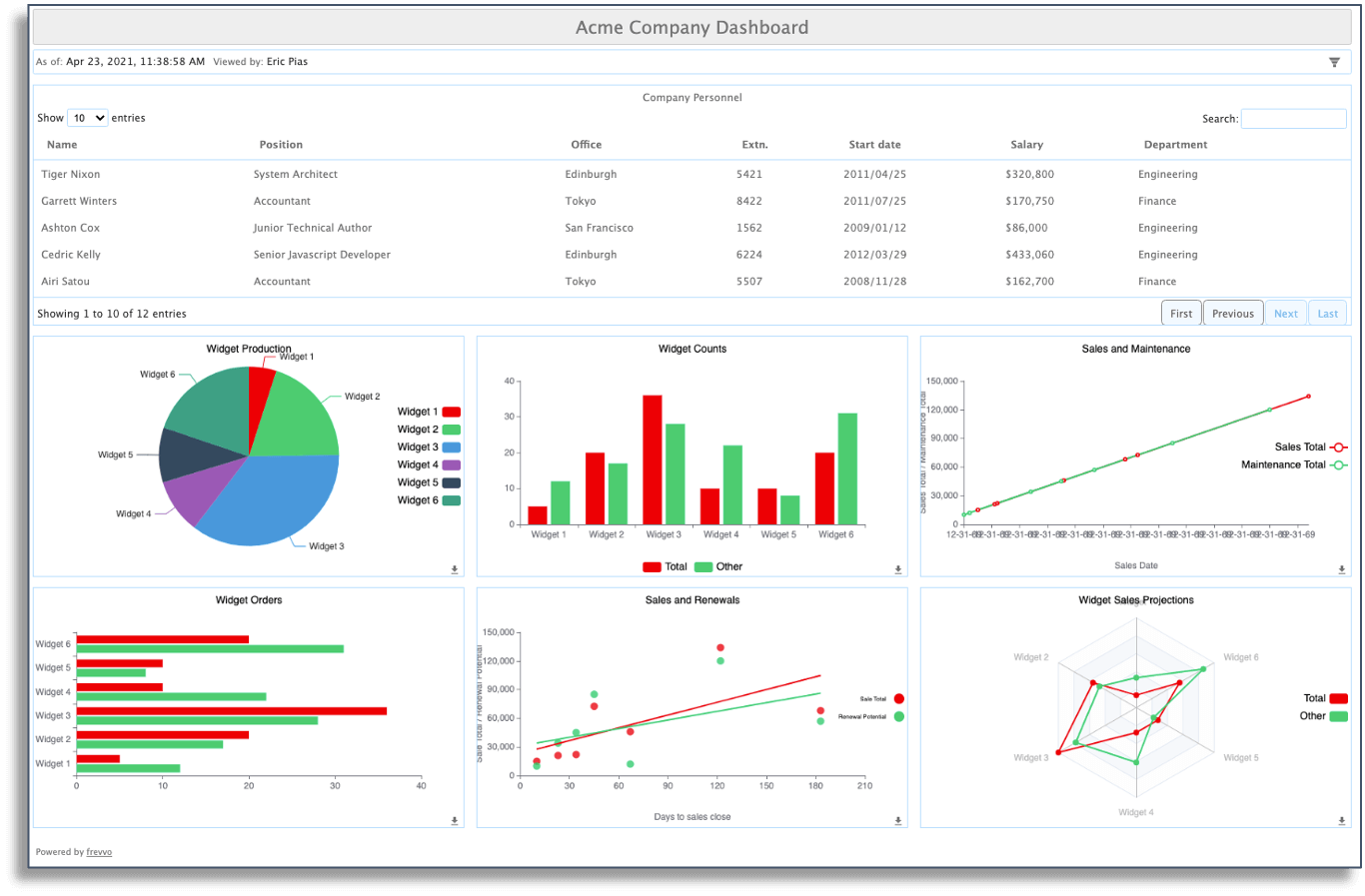
Tracking your performance with workflow analysis software will also make it easier to identify areas for improvement, so you can make additional tweaks as you go.
5 Examples of Business Process Transformation in Action
Planning a process transformation project, but unsure how it will play out in reality?
Check out these five examples of workflow transformation in action.
1. Transforming Invoice Processes
Cricket Australia was having a real issue with its lengthy invoicing process, which required lots of back-and-forth to check data and get approvals.
The workflow was so slow that it took more than 4 days to turn around every invoice. Not only that, but the invoicing tool was outdated and costly, making it hard to use.
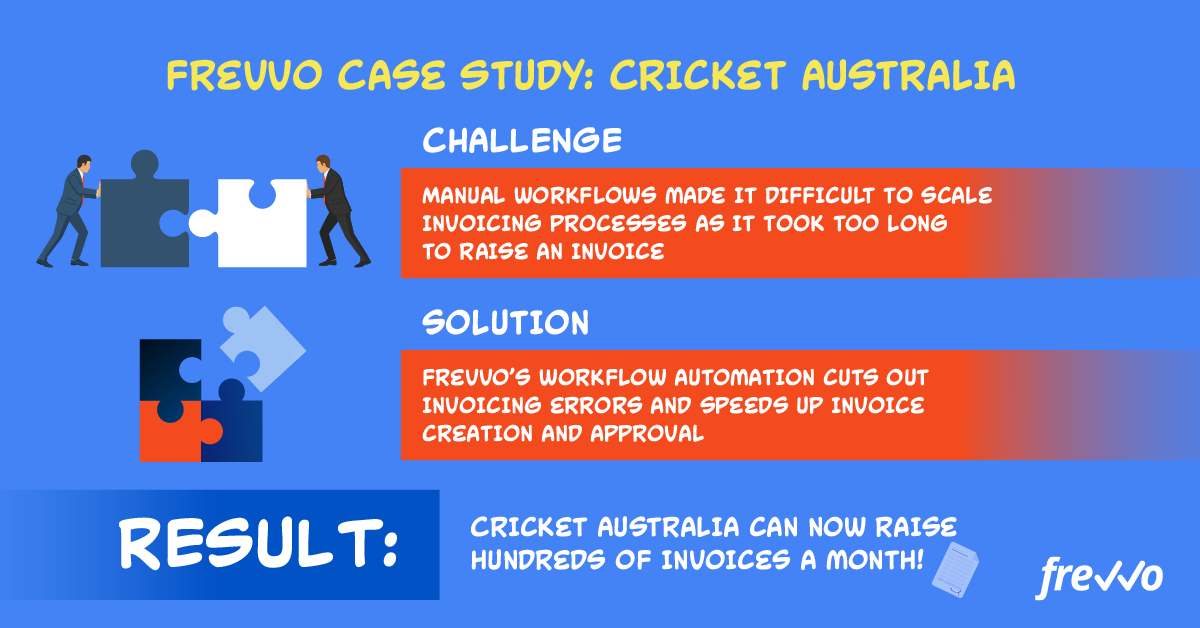
By switching to frevvo, Cricket Australia was able to automate its invoice process. Data is now automatically validated and routed to the correct approver, shaving off a large chunk of processing time.
Thanks to frevvo, invoicing takes half the time, so Cricket Australia can now efficiently process hundreds of invoices a month.
2. Onboarding Process Transformation
Beauty retailer Yves Rocher couldn’t cope with the onboarding processing during peak season. The process was so ineffective that new staff often started without new uniforms or payroll being processed.
By implementing frevvo’s automated employee onboarding software, Yves Rocher could significantly speed up these processes.
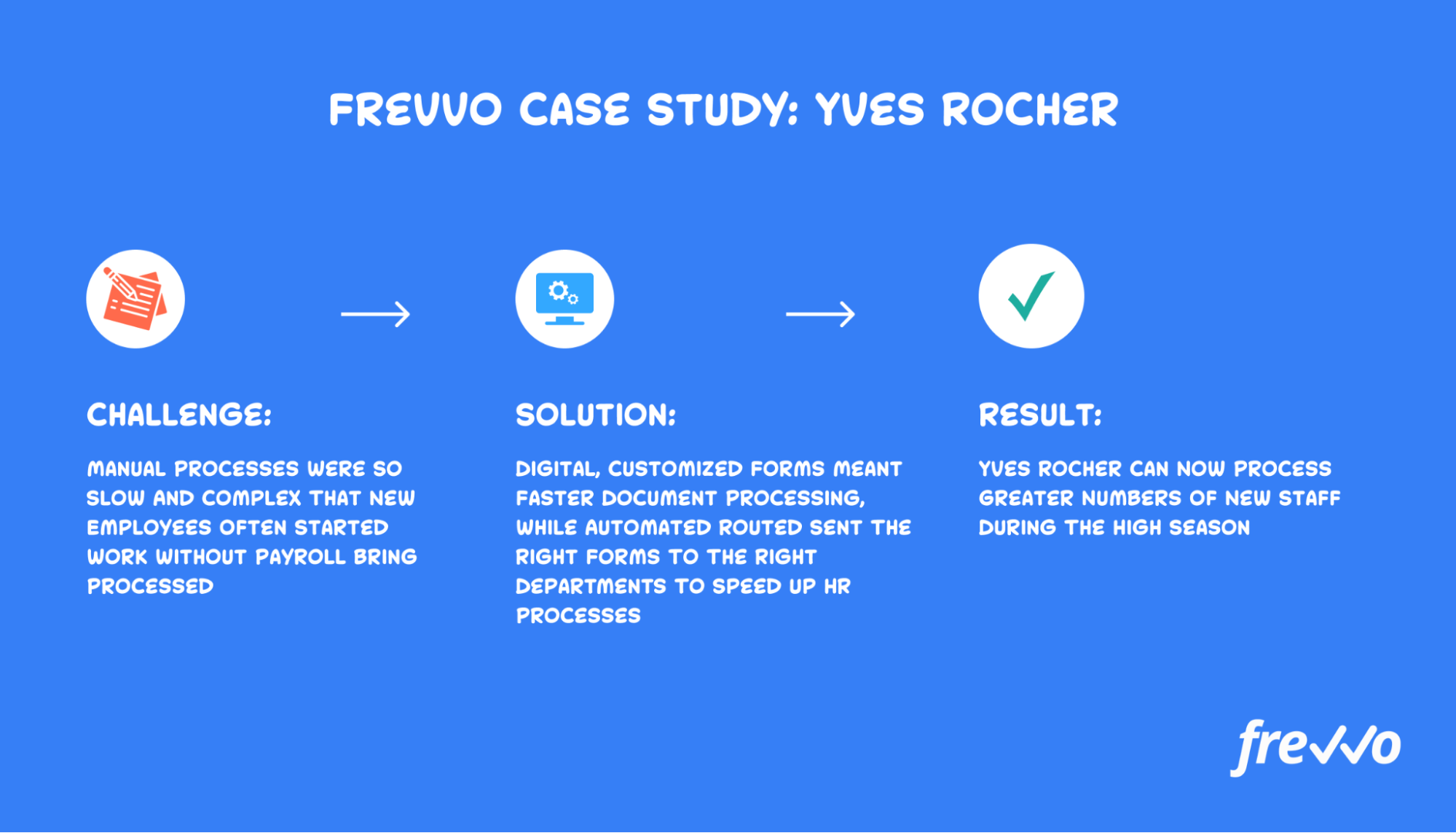
Because frevvo’s customizable digital forms automatically populate and validate, it’s far quicker to produce all the correct documentation. This is automatically routed to the right departments to complete approvals, uniform orders, and payroll on time.
3. Transformation of Contracts Processes
Contract processes at Initial Saudi Group took seven to ten days to complete because physical documents had to go to multiple parties for approval. Not only was this slow, but documentation often got lost or was filled in incorrectly, leading to further delays.
To combat the issue, Initial Saudi Group switched to frevvo.
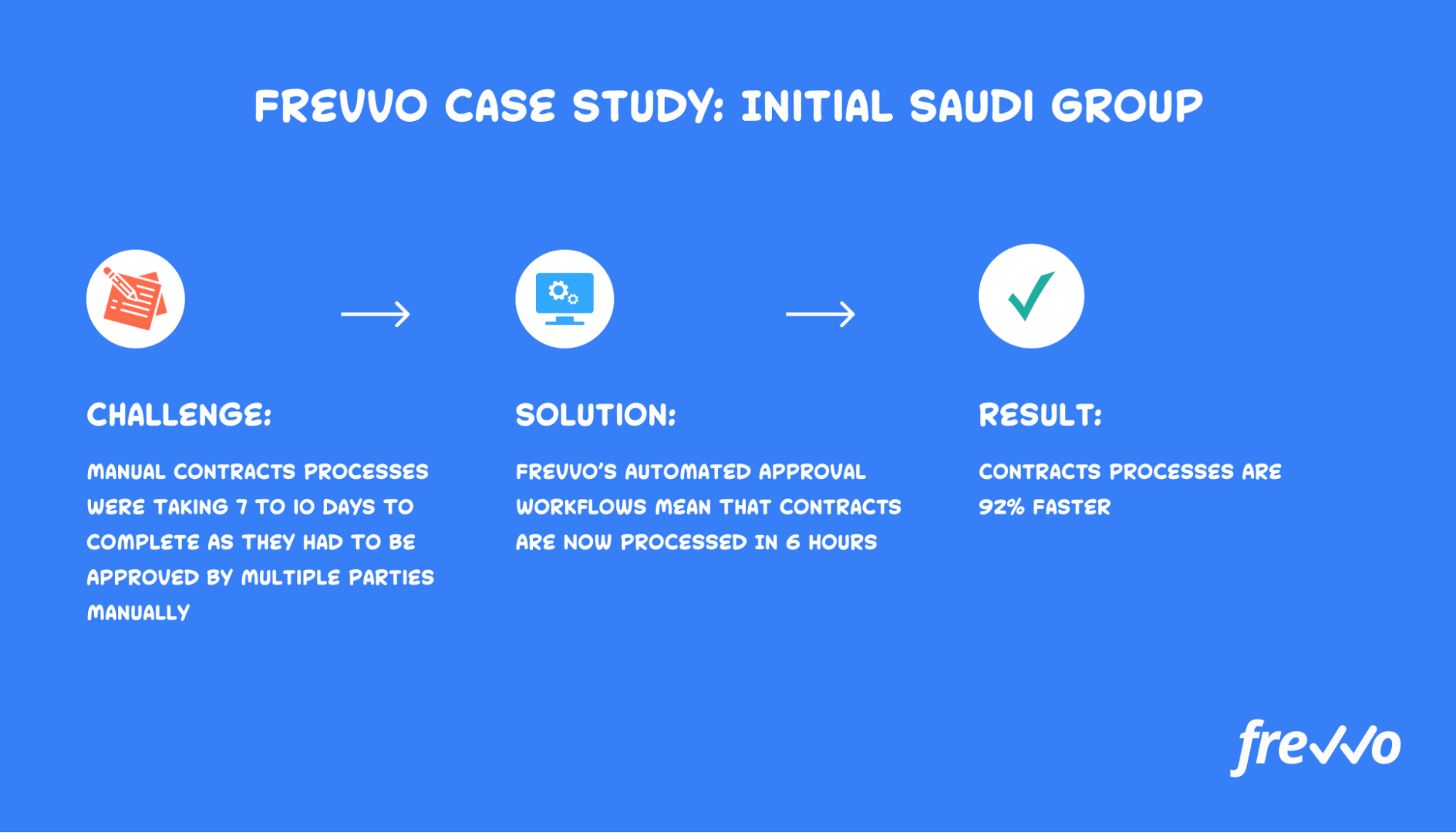
Now, digital forms route to the correct approvers automatically based on custom logic within the forms. Approvers are automatically notified of documentation they need to sign, which can be approved using a digital signature.
Not only is processing more accurate, the new workflow only takes six hours to complete — that’s 92% faster.
4. Transforming the Purchase Order Process
Central Wyoming College (CWC) was managing its purchase orders (POs) with paper processes. Not only did the huge issue with incorrect calculations regularly delay the process, but approvers were also often late signing paperwork.
To overcome these problems, CWC implemented frevvo.
By switching to digital forms that automatically validate, CWC now no longer experiences the same problem with errors.
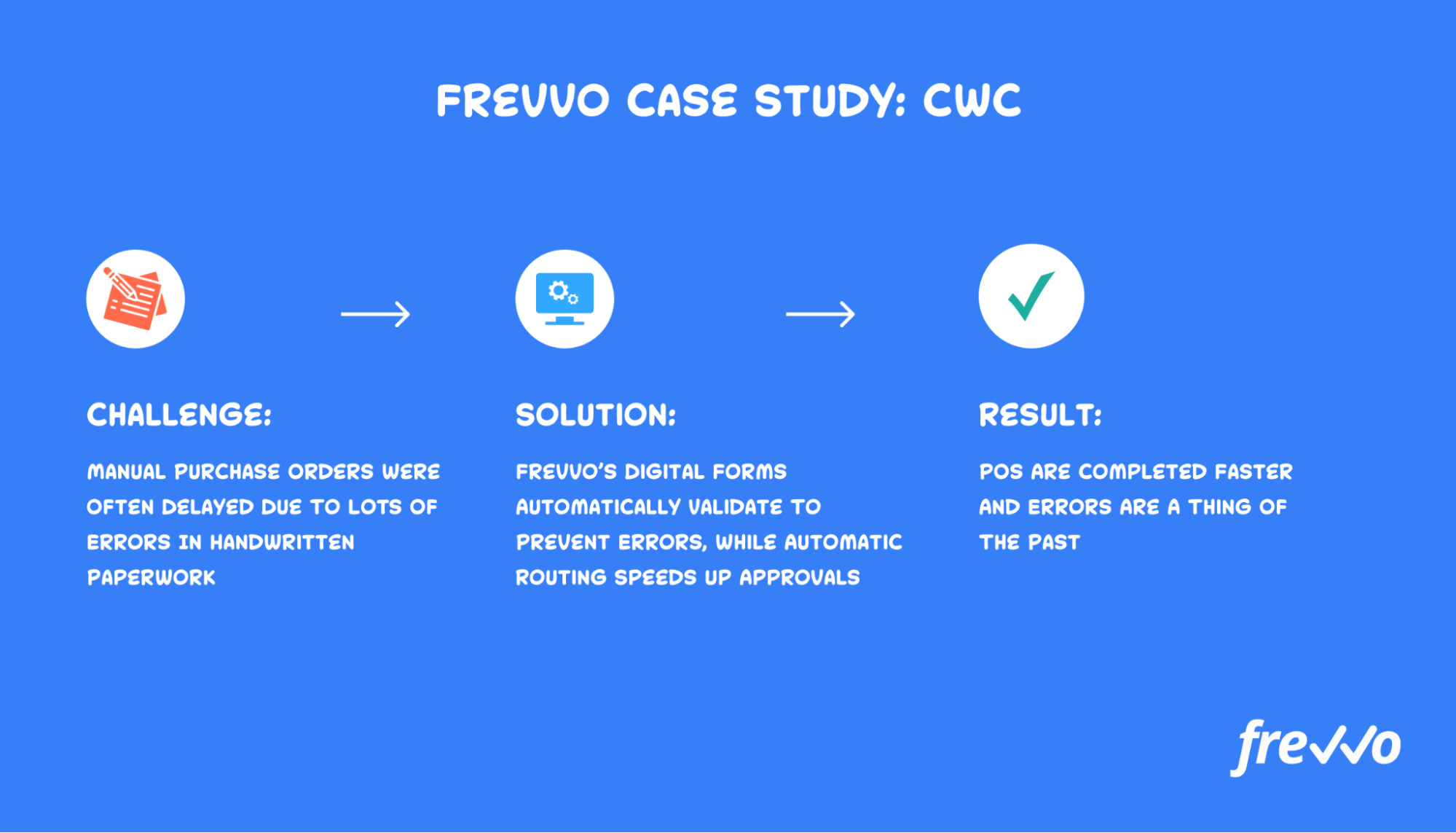
Using dynamic routing, POs go to the correct approvers automatically based on the cost centers in the forms. Approvers are automatically notified that forms need signing. If an approver fails to sign a form on time, this is automatically escalated.
Now, CWC benefits from faster, more accurate PO processing, where approvers sign paperwork on time every time.
5. Transformation of Logistic Workflows
Medical equipment supplier Varex Imaging demands efficient shipping processes since samples and materials are shipped nationally and internationally on a regular basis.
However, prior to frevvo, Varex Imaging was using a combination of email and Excel to organize these shipments and related compliance documentation. Not only was this inefficient, data was frequently incomplete and incorrect, and approval steps were often missed out. In fact, the whole process was so ineffective, that delays for remedial work meant shipping workflows could take up to a month to complete.
By transitioning to frevvo, Varex Imaging has been able to iron out these inefficiencies.
Staff now log into the employee portal to access the Shipping Request workflow from anywhere.
Digital forms automatically populate with relevant information pulled from internal databases, while customer business logic tailors the forms to show only the relevant fields.
Dynamic routing means that forms are sent directly to approvers who can sign online. Thanks to automatic notifications and escalations, approvals are no longer overlooked.
Packing slips and commercial invoices are created automatically and all documentation is filed straight away so audit rails are complete and compliant.
Not only is information now 100% correct, shipping workflows take no longer than 48 hours to complete.
Transform Business Processes Today
Business process transformation can revitalize your organization so that it’s more streamlined and produces better results.
Automation is undoubtedly one of the most effective ways to do this. By replacing routine manual processes with automatic workflows, you can save your team time so they can focus their efforts on growing your firm.
To truly experience the benefits of transforming business processes with automation, try frevvo’s free trial today.

